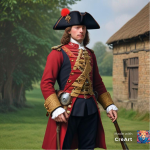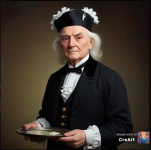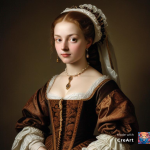Places
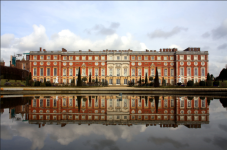
Hampton Court Palace is a royal palace in the London Borough of Richmond upon Thames, 12 miles (19 kilometres) southwest and upstream of central London on the River Thames.
The building of the palace began in 1514 for Cardinal Thomas Wolsey, the chief minister of Henry VIII. In 1529, as Wolsey fell from favour, the cardinal gave the palace to the king to try to save his own life, which he knew was now in grave danger due to Henry VIII's deepening frustration and anger. The palace went on to become one of Henry's most favoured residences; soon after acquiring the property, he arranged for it to be enlarged so it could accommodate his sizeable retinue of courtiers.
In the early 1690s, William III's massive rebuilding and expansion work, which was intended to rival the Palace of Versailles, destroyed much of the Tudor palace. His work ceased in 1694, leaving the palace in two distinct contrasting architectural styles, domestic Tudor and Baroque. While the palace's styles are an accident of fate, a unity exists due to the use of pink bricks and a symmetrical, if vague, balancing of successive low wings. George II was the last monarch to reside in the palace.
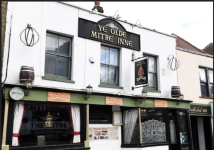
The Mitre Inn,
In 1633, there were three inns adjacent to each other on the east side of the High Street: the Rose (kept by Robert Briscoe), the Crown, and a wine tavern known as the Man. In 1663, they joined to become the Man and Rose and Crown. In 1667, the inn became The Rose and Crown and Mitre, and simply the Mitre soon after. The Mitre primarily catered for the large number of
stage coaches that passed through Chipping Barnet each day and a
War Office survey of 1756 reported that it could provide 12 beds and stabling for 26 horses.
The name "
Mitre" has traditionally been used to suggest affinity with the established church and the Mitre Inn is overlooked by Chipping Barnet's
St John the Baptist Church (1560) in the diocese of
Diocese of St Albans. Vestry accounts record that in 1720 ten shillings was spent at the Mitre entertaining the
Archdeacon of St Albans plus sixpence for a new
chamberpot.
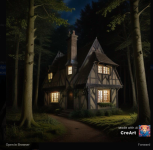
Rivers hunting Lodge:
The lodge was modest in size, dated back to the Tudor era. Vines climbed up the sides and the surrounding areas foliage was overgrown. The place was rarely used except as a base for Matthew and Oliver's highway men activities.
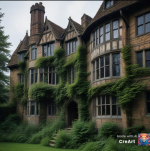
The River's Manor
The Tudor era building was covered in ivy and the facade being to crumble. The plants in the court yard were over grown and spreading rapidly as the gardens had been one of the first staff members to be let go. A few of the windows were cracked or broken and the whole estate had an aura of former grandeur that had long since vanished.






